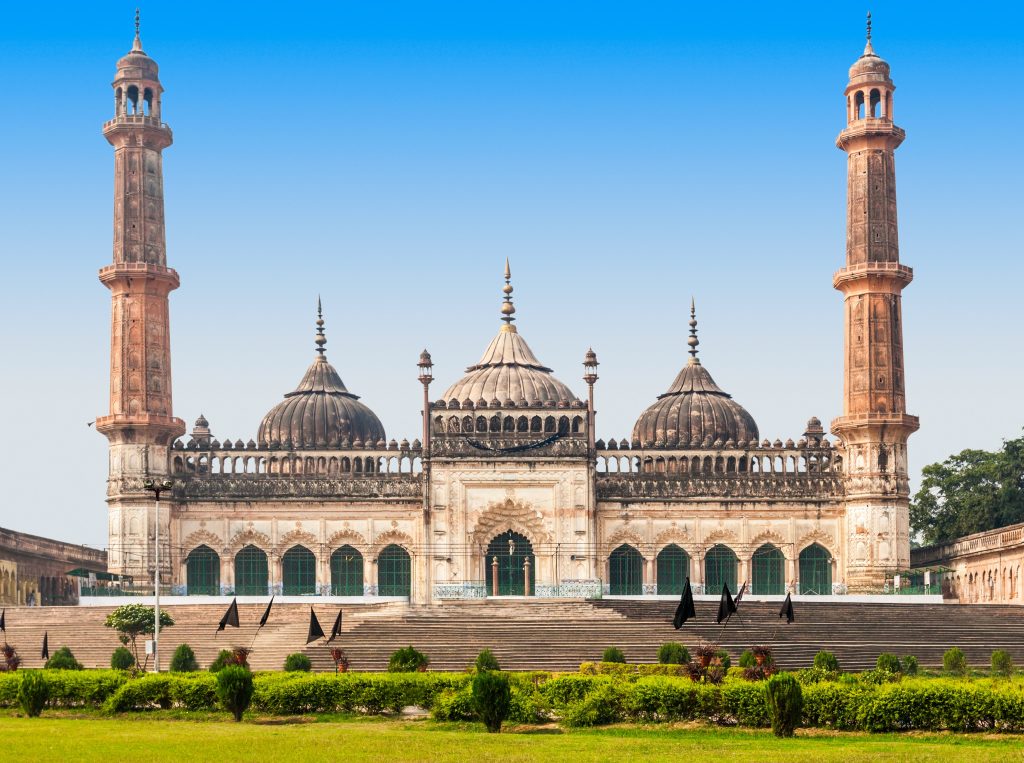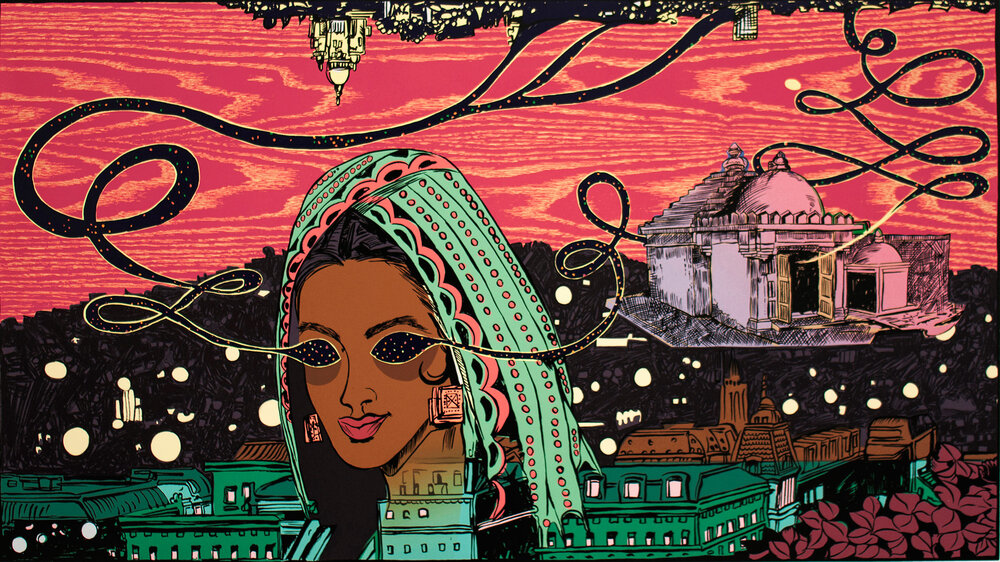The Architect of Indian Constitution
With India approaching its 76th Republic Day, it is as if only a short while ago that Dr. Bhimrao Ambedkar wrote the Indian constitution to restructure the social system. As Dr. B.R. Ambedkar tried to shape society for welfare, his contributions remain worth revisiting to this date.
The image of Dr. B.R. Ambedkar is used as a symbol of Ambedkarite consciousness. He influences both works of art, and artists to remember the struggles of representation for the Dalit community. The drafting of the Indian Constitution is itself a product of an Ambedkarite ideology. Artists use their own mediums to disseminate the effects of Dr. B.R. Ambedkar across society. Platforms such as the India Art Fair can be taken as an interaction of the global audience with such works of art.
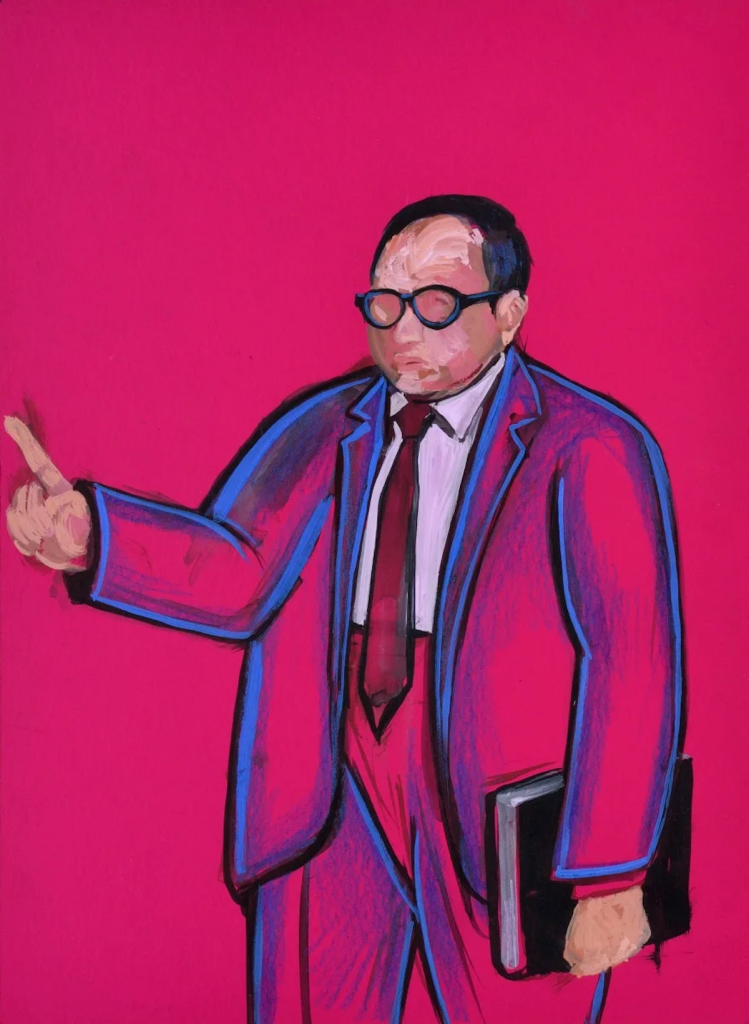
Gouache on paper, 22.9 x 16.5 cm, 9 x 6 1/2 in
Image Credit- Anant Art Gallery
Remembering Dr. B.R Ambedkar through Art
With an aim to remember the struggles of the Dalit community and the contribution of the father of the constitution, Vikrant Bhise (b. 1984), an artist from Mumbai, displayed his works on the life of Dr. B.R. Ambedkar at the India Art Fair 2023. With the 16th edition of the global art fair nearing its display, Bhise’s work helps remind us of the possibilities of representation in the Art community.
Vikrant’s work is deeply rooted in historical movements and struggles that are important for the Dalit community but it exposes the invisible within the Indian context. Movements like The Dalit Panther and Payal Tadvi’s suicide case strongly influenced him to produce a work that could re-ignite questioning in the minds of people. Vikrant being associated with the Dalit community, has a way of conveying the harsh truths about the life of labourers and people from the lower class. Portrayed with subtlety, he blends reality with his visions of Babasaheb guiding the people for a better future.
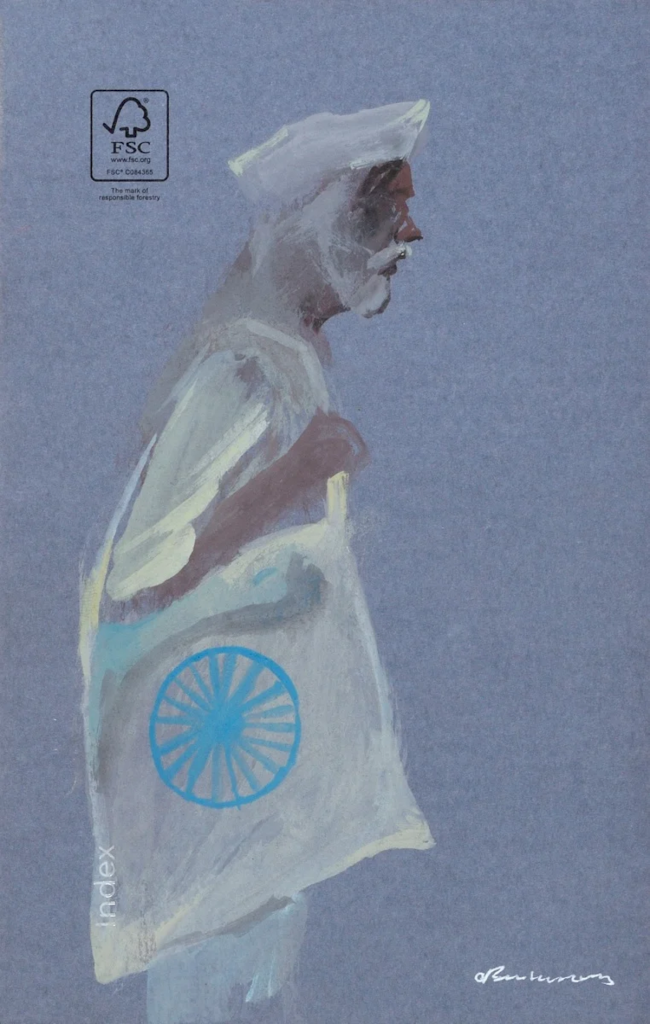
Gouache on paper, 17.8 x 12.7 cm, 7 x 5 in
Image Credit- Anant Art Gallery
“I want to remind people about the contribution of Dr. B.R. Ambedkar. My work is based on the lives of Dalit communities, I really care about the lives of labourers (working class) and I want people to understand the exploitation they are suffering from the upper classes”. Bhise said.
Vikrant was a courier boy when he was in school. Due to the financial instability of his family, he started working in the eighth grade. He did not feel like studying in school. However, his interest in art and culture led him to pursue a foundation course from Model Art Institute, and later he joined LS Raheja School and then JJ School of Arts.
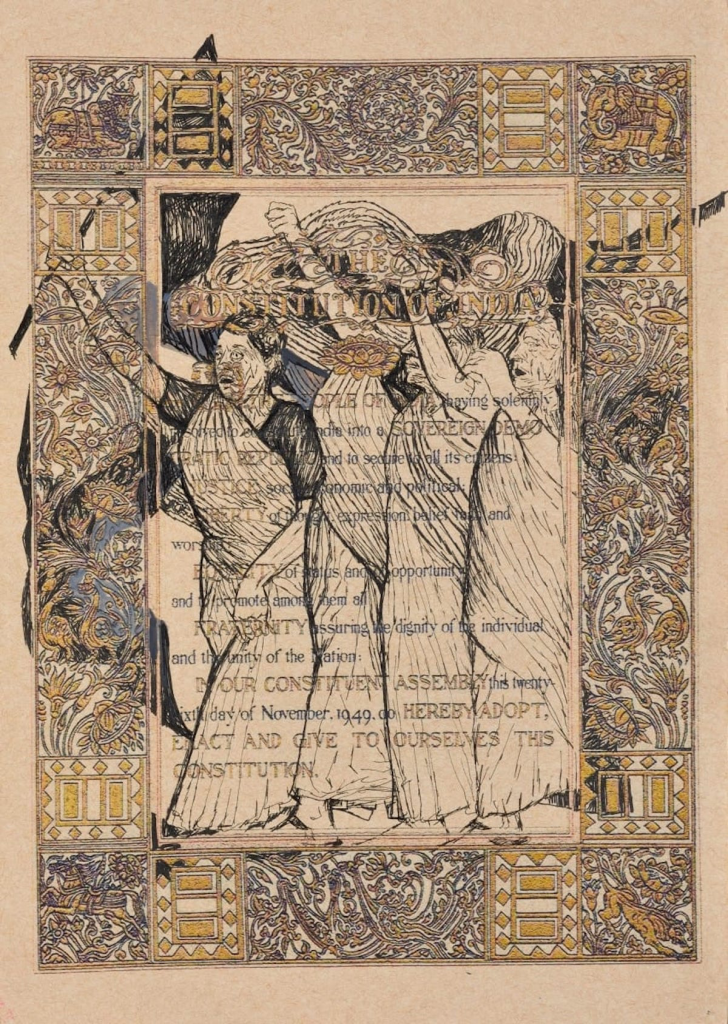
Pen on paper, 29.7 x 21.1 cm, 11 3/4 x 8 1/4 in
Image Credit- Anant Art Gallery
At the forefront of the struggle against caste-based domination and its direct impact on land, freedom, and labour, Vikrant’s artistic practice reiterates his commitment to the revolutionary spirit rooted in Ambedkarite consciousness. On his official website it says, “Working across monumental scrolls and multi-paneled paintings incandescent with the light of resistance that once illuminated the murals of post-revolution Mexico; and smaller works with ink on paper which holds the urgency of proximate witnessing of the human condition in the vein of Somnath Hore, Vikrant’s iconography is informed and deliberate in its radicality”.
Vikrant identifies his work as weaving the resistence and its movements across time.
Why remember Dr. B.R Ambedkar one might ask?
Bhise’s work answers the question in the form of an artwork. Art comes out of its decadent shell as its informed by social realities. It becomes a memory point from which to recall the struggles of the past and an attempt to navigate the present. As Bhise’s artwork reflects the consciousness of Ambedkar; the struggle for constituitonal rights, equal visibility, freedom of ideology; the struggles of the community are remembered and an imagination is sought after.
Vikrant Bhise at India Art Fair 2025
His work was curated and displayed by Anant Art Gallery in 2023. The India Art Fair allowed him to not only sell the work but also meet great artists with whom he could learn. All his artworks were sold within the few days of the fair and also in parellel shows. The engagement with such works of art is a way to pull out the carpet from underneath your feet. Destabalise and shake the foundations of what is considered “accepted” or “understood”.
Bhise is set to display in yet another round of India Art Fair 2025 with Anant Art Gallery and more. For this edition, it would be interesting to see how, and if, the consciousness of the architect of Indian constituion is expressed in the works on display.
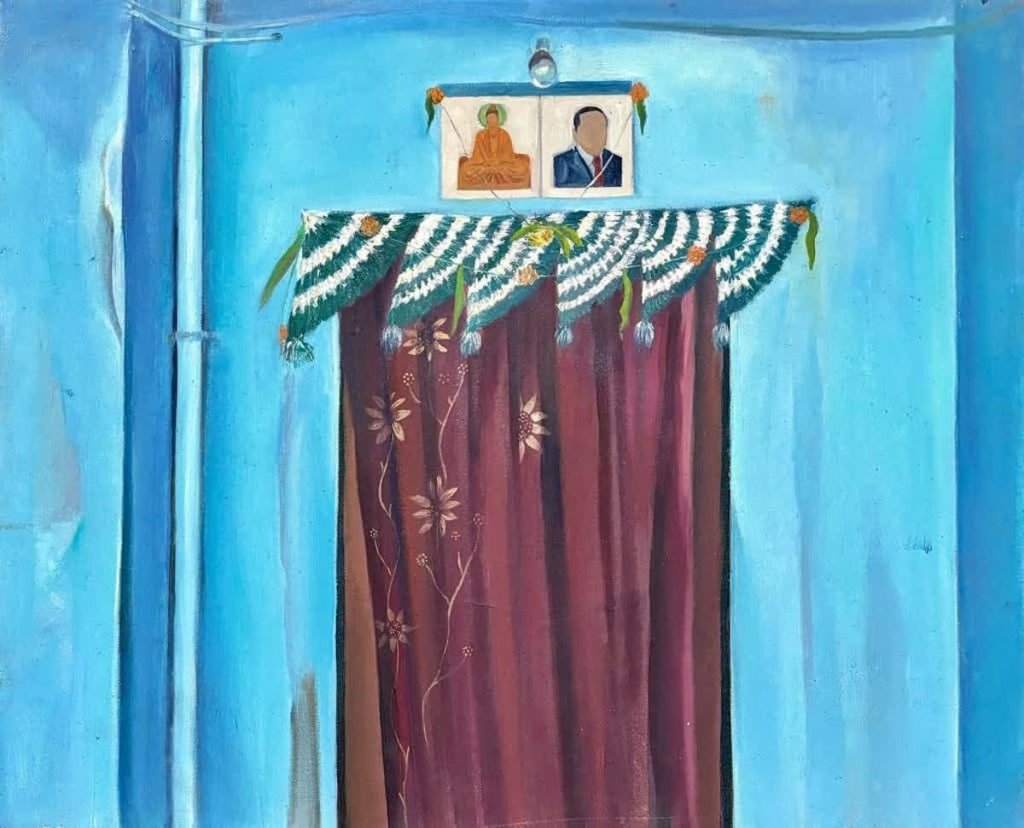
Oil on canvas, 45.7 x 61 cm, 18 x 24 in
Image Credit- Anant Art Gallery
Featured Image courtesy- Anant Art Gallery



